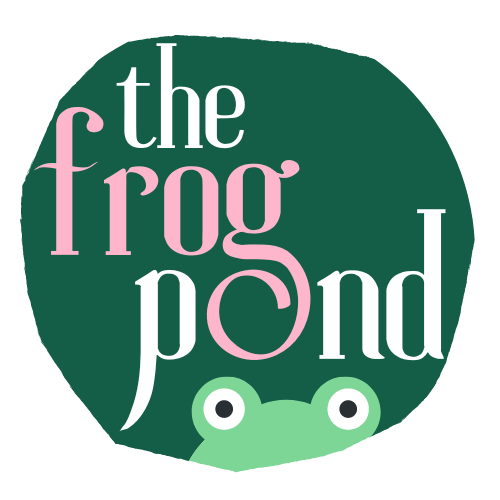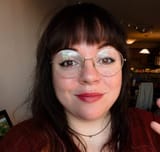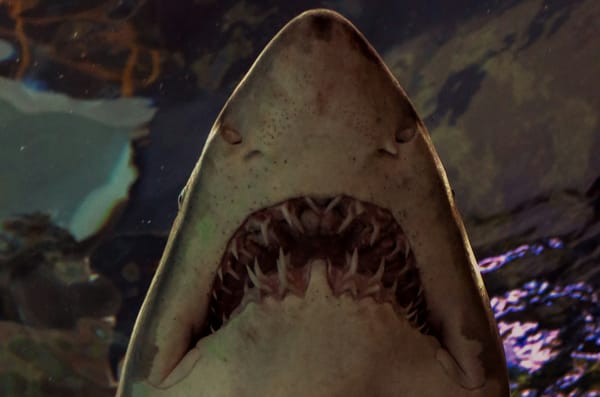The Frog Pond #25: Squid Bones vs Microplastics: Fight!
The humble squid (or at least its bones) is part of a new tool tackling microplastics!

Welcome to February! Let's get through it, eh? But first:
Squid bones could help filter out microplastics
With over 4.6 billion metric tons of plastic waste in the environment1, it's exciting news that a new sustainable filter can remove up to 99.9% of tiny plastic from water. And it's made of just two things: squid and cotton2!
Using chitin derived from squid bone and cellulose derived from cotton, researchers from Wuhan University, China have created a foam filter to trap microplastics using sustainable materials2.
Researchers were able to reuse the filter up to 5 times and keep removal rates of microplastics above 95%2. This worked for "agricultural irrigation water, lake water, still water, and coastal water"2.
How does it work?
4 types of polymers (polystyrene, polymethyl methacrylate, polypropylene, and polyethylene terephthalate) create a biomass fibrous framework to absorb microplastics thanks to "multiple intermolecular interactions" between those plastics and the filter, where the filter has a wide diversity of bonding reactions to "grab" the plastic in different shapes2.
Most microplastics found in natural water are negatively charged. Electrostatic interactions are an important factor in the filter's efficacy1. Hydrogen bonding and Pi-stacking (I don't have the space to explain fully but check out "pi bonds" and "aromatic rings" to begin that knowledge journey) also play a role1. While chitin and cellulose on their own doesn't display the intermolecular interactions needed to remove microplastics from water, the combination does!1
So do you just mash some squid and cotton together, or...?
There's a "careful chemical manipulation"1 to break down the internal structure and rebuild both parts together to improve the catchability (very real scientific word, for sure) of the filter2. This creates a stable supramolecular framework1 that can capture anything that attracts to it, whether through electrostatic or chemical bonding1.
The process also includes hydrogen bonding to create a substance with a "highly porous interconnected structure, rough and positively charged surfaces, and numerous active sites" which adds multiple layers of interactions into the mix.1
What about other stuff in the water?
Microplastics aren't the only thing that can make water harmful to humans. Other pollutants like bacteria and solvents such as Congo Red, a sodium salt that can cause serious eye irritation, may cause cancer, and may damage fertility3, can also be caught by the new filter2.
One test, incubating the filter in a culture of E. coli, had similar positive results as the microplastics to capturing the harmful bacteria. The filter even showed evidence of self-cleaning and an ability to keep its porous structure's integrity as almost no bacteria were found on the surface1 after the experiment.
The research is still very early on in development, so don't expect to see these squitton (cottquid?) filters floating by any day now - but research like this may turn the tides of our water sources' future.
A word from a passing frog
I hope you've had a good start to 2025!! Mine has been busy!
Writing/Publishing
Best news first: I've signed my contract!! This past year has been a BIG learning curve for how publishing works, what's fast and what's slow, what every contract term means--and I know I'm only at the beginning of learning this stuff!
I've been working on the same historical gothic horror novel I'd mentioned last Frog Pond, featuring seance and hoaxes during the Spiritualism movement as well as Nova Scotian folklore. The research / brain dump / story binder document is over 45,000 words long. So there's been plenty of progress! My next goal is to finish the detailed outline before switching over to editing A FATE WORSE THAN DROWNING. So excited to get back into that world and make it the best it can be.
Reading
I finished 4 books in January, 1 so far in February, and switched how I'm picking books. Over the last few years I've picked whatever's available at the time on Libby. Which meant reading a lot of books! But not usually tailored to my style. Now I'm focusing on making sure I'm reading what I WANT to read. If I'm not enjoying the process, what's the point?
The London Seance Society by Sarah Penner: While this was mainly a read for book research, I quite enjoyed it! Obviously I'm a sucker for stories about sisters, and I found its take on the supernatural very grounded, especially with the hoaxes it focuses on as well.
Acceptance by Jeff Vandermeer: Anyone who knows my taste knows I LOVE Annihilation. I had a great time coming back to Area X with the third book in the Southern Reach trology! The way the characters dissect big ideas through the lens of ecology was super compelling.
Midnight in Chernobyl: The Untold Story of the World's Greatest Nuclear Disaster by Adam Higginbotham: Fun fact about me: I'm very interested in nuclear power and its history! As you can see from a past Frog Pond about ancient (natural) nuclear reactors. This book exceeded my expectations based on the HBO mini series adaption, which were already high!
Harrow the Ninth by Tamsyn Muir: Finally finished the second book in the Locked Tomb series after a long Libby wait! What a wild ride. I need a breather before deciding on when to read the third book.
Service Model by Adrian Tchaikovsky: My first Tchaikovsky novel! And such a great one! Loved this sci-fi quest of a butler robot searching for work during a robot apocalypse.
Footnotes
1: https://www.science.org/doi/10.1126/sciadv.adn8662
2: https://www.sciencealert.com/filter-made-from-squid-bone-could-be-the-solution-to-microplastics
3: https://pubchem.ncbi.nlm.nih.gov/compound/Congo-Red#section=GHS-Classification





